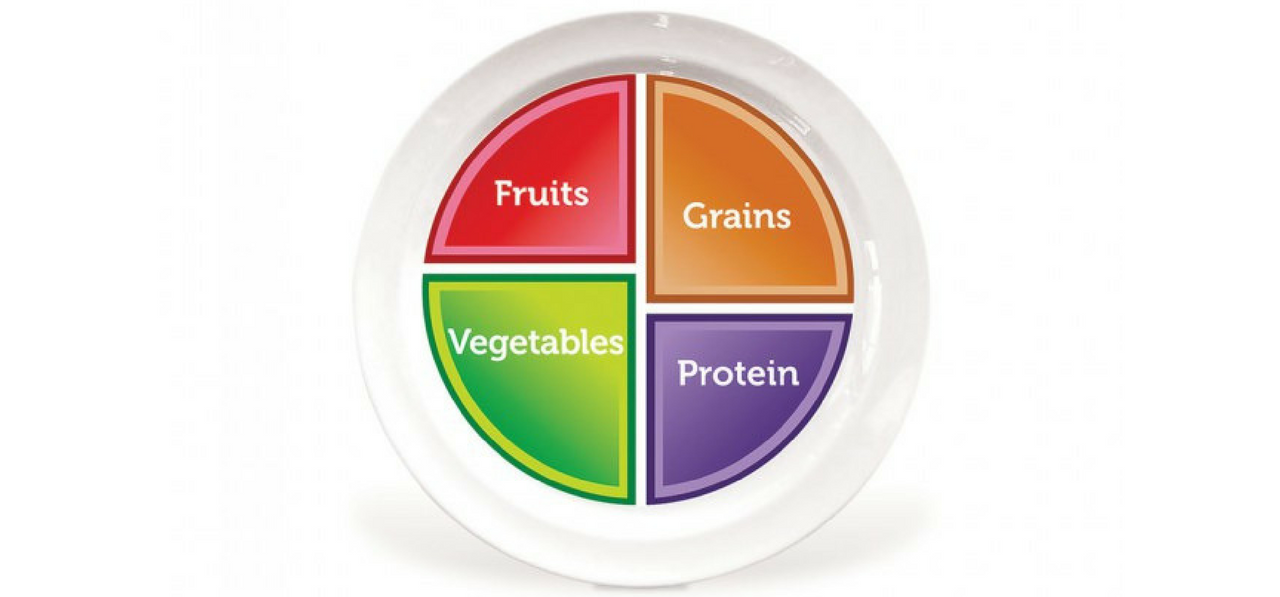
Monday Motivation | Your Plate & MyPlate
"The first lady,
I graduated with a B.S. in Physical Education that same year. I began teaching P.E. and Health in that same year as I worked towards a M.S.Ed. in Health Education.
The pyramid was always confusing to students.
What is a "serving" anyway?!
MyPlate may work better than the Pyramid, but it is by no means perfect, so today we'll look at some of the pros and cons of the MyPlate educational tool and discuss how you can best use it.
Cons:
-
Explanations not always included
The image alone does not explain what foods fall within each category.
You can find more of that information here. -
Does not include information on the relation between physical activity and food
Unlike the Food Pyramid 2.0
-
Dairy
You might realize that I've left it out.
It's not "bad" for us but also... we don't need it.
In fact, a lot of us can't have milk and other dairy products.
Raise your hand if you, or someone you know is lactose intolerant!
So, what gives?
The Mediterranean and DASH (Dietary Approaches to Stop Hypertension) diets have been found to be two of the best diets (or ways of eating) for overall health. The only difference between what the USDA suggests and these diets is the dairy recommendation.
Unfortunately for us there's lots of money in selling food, and the lobbyists for these industries have the ear of many government officials. The U.S. Dairy Export Council ain't nothing to f*ck with.
Pros:
-
It is better than the Food Pyramid
No one eats the way the ol' Pyramid presented food.
-
It's practical
We eat on plates and MyPlate gives a visual representation of how to layout meals. -
It does not require meat
Although the Food Pyramid described it as the "Meat, Poultry, Fish & Nuts" Group, it was more commonly called The Meat Group. This understandably might alienate those who do not eat meat. MyPlate now describes this group as "Protein"!
Myplate is offered in different languages and, if you go to the website, they even send educational materials for free!
So how do you use it?
In general, we can aim to make half of our plates fruits and vegetables (I like to say fruits and/or vegetables), grain products ("whole grain" bread, rice, pasta etc.) take a little more than a fourth, and have your protein take up the least amount of space. Which goes against how many of us eat.
Remember, these are all generalizations and there are professionals who can help you figure out what works best for you, your body, and your goals!
Lastly, I'd like to challenge you to continue to question everything.
Why do we eat the way we do and why are we taught to eat in the way we are?
I hope you even question me!
Let's continue the conversation here in the comments and over @geekgirlstrong!




Comments
LHfCwFUcDtTR said:
JDMSafeChdAuKX
AHFdqVwIx said:
ZIiXHxkdAUnSOzlV
AhdZmknU said:
VTrZwJUH
QHLWrJGbinakBNF said:
eISNVrHEwhqCK
erxhyLAzUinT said:
HNKGYALCoyDxtXOj
NJvjgSwlyqnzIATV said:
SbzPIZgvGEiN